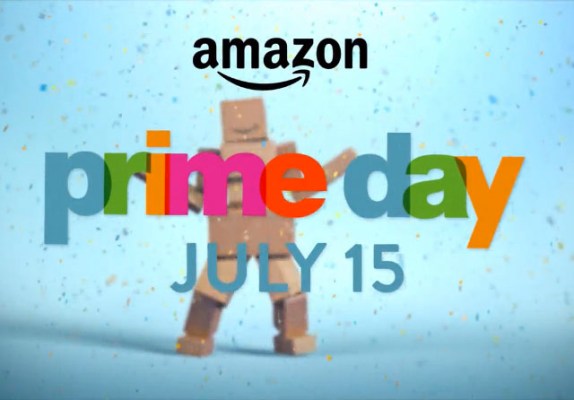Independent reports yesterday had said that Amazon’s big “Prime Day” sales event had sent the online retailer’s sales spiking. Today, Amazon is detailing the impact of Prime Day by releasing its own internal metrics. According to the company, Amazon Prime Day broke sales records, even exceeding Black Friday 2014 sales, which had been the biggest Black Friday to date, notes Amazon.
Amazon customers ordered 34.4 million items across Prime-eligible countries, the retailer reports, breaking all Black Friday records with 398 items ordered per second.
The retailer also says that worldwide order growth increased by 266 percent over the same day last year – which isn’t as remarkable, given that the same day last year was not “Prime Day.” Yesterday was the first time Amazon had ever attempted to create its own sales holiday on its site by offering discounts on its own products and services, alongside those from other merchants. Those deals added up to “millions” of dollars in savings, says Amazon.
In addition, the company says that worldwide order growth was 18 percent higher than last Black Friday, Amazon Sellers saw their unit sales up by 300 percent, and more new members tried Amazon Prime than on any other day in Amazon’s history.
That latter item indicates the true success for Prime Day, whose sales and deals were only available to those who subscribe to the company’s $99 per year membership program. Prime customers receive free 2-day shipping on over 20 million items, and can take advantage of other benefits like same-day shipping in 14 metros, as well as access free streaming music, TV and movies, unlimited photo backup, Kindle Lending Library, and more.
The goal with Prime Day was not only to unload merchandise, but also convert shoppers to subscription customers. With access to free shipping, Prime customers will ultimately shop and spend more on Amazon.com over time.
Because of the success of the event, Amazon confirmed that it will host a Prime Day again.
“Thank you to the hundreds of thousands of new members who signed up on Prime Day, and our tens of millions of existing members for making our first ever Prime Day a huge success,” said Greg Greeley, VP at Amazon Prime in a statement. “Going into this, we weren’t sure whether Prime Day would be a one-time thing or if it would become an annual event. After yesterday’s results, we’ll definitely be doing this again.”
On social media yesterday, a number of customers complained that Amazon’s deals were not as stellar as they expected, and those deals they did want were too quickly sold out.
Amazon also confirms how quickly some of those limited quantity deals were depleted, saying that tens of thousands of discounted Fire TV Sticks were sold in just an hour, which made it the fastest-selling deal on an Amazon device ever. Meanwhile, thousands of Amazon’s connected speaker Echo were sold in 15 minutes, and Fire tablet sales topped Black Friday’s figures. In total, it sold “hundreds of thousands” of Amazon devices.
Hundreds of thousands of other products were shipped, too, like 56,000 Lord of the Rings: The Motion Picture Trilogy sets; 47,000 TVs (up 1,300 percent year-over-year); 51,000 Bose headphones (vs. 8 last Wednesday); 28,000 Rubbermaid container sets (a deal that was actually made fun of via Twitter users at times); 24,000 pressure cookers; 14,000 iRobot Roomba 595 vacuum robots; 12,000 Fifty Shades of Grey Blu-rays; and 10,000 of Meguiar’s X2020 Supreme Shine microfiber towels.
ChannelAdvisor, which has been independently tracking Amazon’s sales numbers, says that Amazon’s U.S. daily sales were up 93 percent year-over-year versus July 16th, 2014 (to align with the same day of the week a year ago), and Amazon’s EU daily sales were up 53 percent. ChannelAdvisor’s data in this case is focused on its own customers – that is, third-party merchants who participated in Amazon’s Prime Day deals. It doesn’t include Amazon’s first-party data on things like Kindles and Fire tablets, which is why Amazon’s own numbers are higher.
But that does mean that Prime Day had a spillover effect to the rest of the Amazon’s e-commerce site. In addition, these merchants came within 3 percent of their Black Friday sales numbers, but only within 60 percent of CyberMonday figures. “That is still pretty impressive,” ChannelAdvisor claims.
“By all measures, Amazon seems to have had a great first Prime Day,” says ChannelAdvisor Chairman Scot Wingo. “In the U.S. they were able to have a day that was 4X the baseline growth and come very close to Black Friday volumes for third-party sellers. In the EU, there was also strong growth, but not quite as large as the U.S.”
